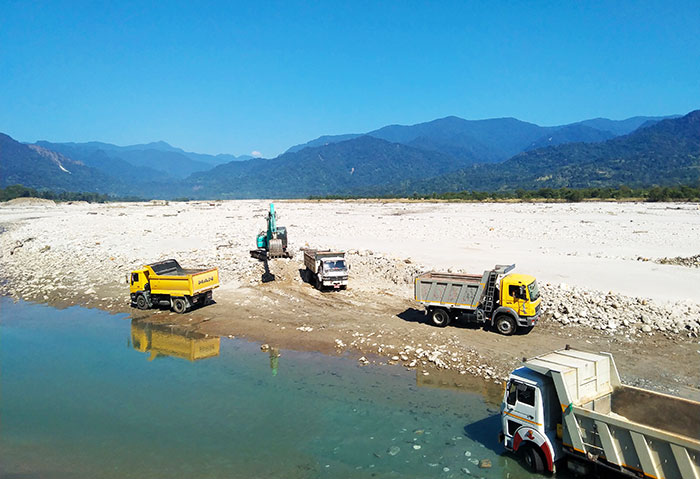Nima | Gelephu
Gelephu Thromde has started planning new mitigation structures along the Maochhu.
The dzongkhag has spent millions building levee and other protection structures.
Sarpang dzongdag Karma Galay said that the dzongkhag had requested a holistic programme from the work and human settlement ministry. “We have provided an uninjured reaction during a flood so far, doing small works here and there. Over time we had cumulatively spent a huge amount.”
He added that it made sense to undertake a bigger project, a sustainable and one-time intervention. “But, these are going to cost huge.”
A flash flood triggered by a heavy monsoon in July washed away a 200m-gabion wall, parts of Bhutan Football Federation’s football pitch, and the supply line of thromde’s water treatment plant.
Four soldiers lost their lives trying to rescue stranded people.
Maochhu course is diverted back to the main course with the construction of more than 250m boulder wall, replacing the gabion wall that was washed away during the flash flood in July.
Gelephu Thromde has started foundation work to construct RCC lining and embankment walls at one of the critical points—near the point where Shetikhari stream joins the Maochhu.
The thromde is carrying out river protection walls worth Nu 20 million with fund support from the department of disaster management.
Chief engineer with thromde, Ugyen Dorji, said the temporary structure built along the Maochhu might not restrain the monsoon flood. “There is budget constraint and it’s not feasible to built concrete lining along the whole stretch.”
He added that the situation would remain the same unless separate riverfront development measures are taken up. Gabion structures last only for three to four years.
So far, all mitigation projects along the Maochhu have been based on trial and error method, according to the official.
An inception report by Netherlands Enterprise Agency and Flood Engineering and Management Division, MoWHS stated that Bhutan suffers in general from a lack of data and information.
Nearly 10,000 acres of arable land have been eroded so far.
According to the report, nearly 10,000 acres of arable land have been lost due to flooding along the Maochhu banks.
The report stated that river course changed periodically. The flood in July occurred with the change in the course after the protection collapsed near Shetikhari. “Flood problems in Gelephu are caused by heavy rainfall in the upper catchment areas. Because of the very steep mountains, high discharges are observed in the downstream part of the rivers.”


